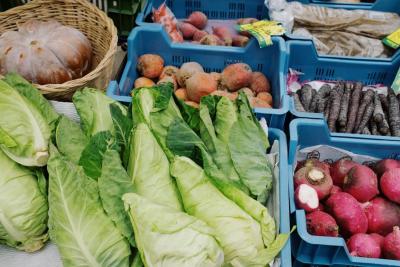Evaluating the Future Evolution of Virtual Water Trade
Water-stressed regions rely heavily on the import of water-intensive goods such as crops from other regions. The amount of water embedded in these traded goods is known as virtual water. Changing socioeconomic and climate conditions will drive changes in the trading of agricultural goods across international borders. Now a research team including scientists at the U.S. Department of Energy’s Pacific Northwest National Laboratory has estimated future changes in virtual water trading. They combined future socioeconomic and climate conditions in a complex model that accounts for the relationships between energy, water, land, climate, and human activities. Their analysis reveals that the volume of water embedded in internationally traded agricultural goods will at least triple current values by the end of the century, because of future population dynamics and changes in water stress.
Previous research has focused on reconstructing historical virtual water trade estimates to understand previous evolution, yet future estimations remain nearly nonexistent. This is often due to an inability to model future agricultural trade driven by the interconnection between socioeconomics and water. However, the Global Change Analysis Model (GCAM) can capture such conditions in the modeling of future scenarios. Researchers used this model to analyze the future social dependency of water embedded in agricultural crop trading across international borders. The results highlight areas that may become increasingly reliant upon importing water-intensive crops because domestic water supply may not allow for adequate growth.
Evolving socioeconomic and climate conditions will cause alterations in trade dependencies and water availability resulting in changes in virtual water trading. While virtual water has received increasing interest in the scientific community, comprehensive future projections of virtual water remain absent. Researchers used the GCAM model to show, for the first time, changes during the 21st century in the amount of various water types embedded in traded agriculture necessary to meet international demands. The model allows for the distinction between and quantification of renewable surface water and groundwater recharge, nonrenewable groundwater, and soil moisture embedded in these traded goods.
They found that future interregional virtual water trading of renewable water sources may triple by 2100, while nonrenewable groundwater trading may at least double. Basins in North America, as well as the La Plata and Nile River basins, will contribute extensively to virtual water exports, while much of Africa, India, and the Middle East will rely heavily on virtual water imports by the end of the century.

